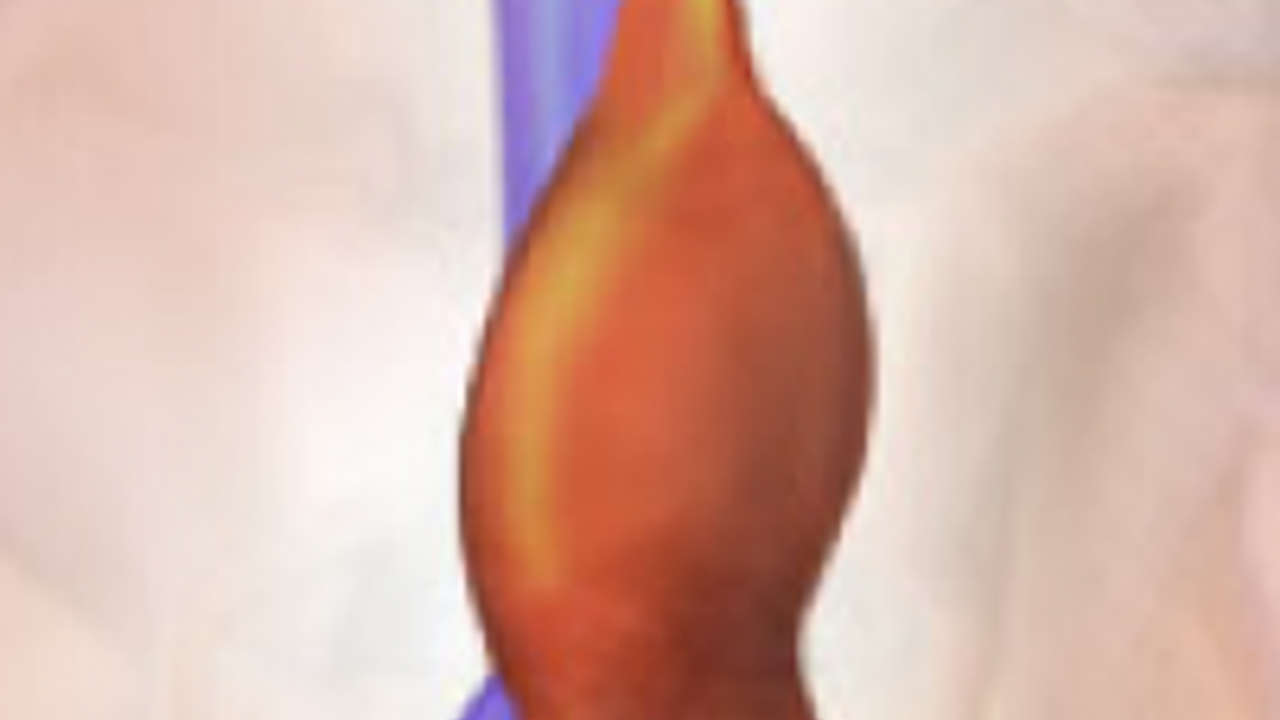Abdominal Aortic Aneurysm
Nov 19, 2021
Abdominal Aortic Aneurysm
This occurs when the wall of the blood vessel becomes weak, and a balloon-like dilation called an aneurysm occurs in this case in the abdomen. The abdominal aorta is the most commonplace for this to occur. When the diameter is ≥ 3cm it is considered an abdominal aortic aneurysm. The leading cause is atherosclerosis contribution. Other causes that can weaken the arterial wall are trauma, vasculitis, syphilis, bacterial or local fungal infections, sepsis, or infective endocarditis. Enlargement is often noted at 10% a year and about 20% remain the same size.
Risk Factors
AAA risk factors include older male age, race, smoking, and first-degree family relative with an AAA. Other inclusions could be vascular aneurysms of other sorts, coronary artery disease (CAD), cerebrovascular disease (CVD), atherosclerosis, hypercholesterolemia, and hypertension (U.S. Preventive Services Task Force (USPSTF), 2019).
Symptoms
Often noted to be asymptomatic and found accidentally with US testing for other reasons. Signs and symptoms may include pain that is steady, deep, boring, visceral and felt mostly in the lumbosacral region (Farber & Parodi, 2020). May or may not be able to palpate the pulsatile mass (just above and to the left of the umbilicus). Auscultation (along the route of the aortic artery- do not push on the stethoscope) of a systolic bruit may be done over the aneurysm.
Imagining
According to the Journal of Vascular Surgery, the recommendation for use of ultrasound is the preferred imagining modality for aneurysm screening and surveillance. The sensitivity and specificity approach is 100% but sometimes the obstruction of bowel gas or obesity occurs (Chaikof, et al., 2018). CT imaging is more reproducible than the ultrasound for initial readings. This does expose the patient to increased radiation exposure. An echocardiogram can be done for a thoracic aortic aneurysm but is not the ideal method for an abdominal aortic aneurysm.
Screening according to USPSTF (2019)
USPSTF screening guidelines were documented on December 10, 2019. These guidelines concluded that AAA in men aged 65-75 who have EVER smoked is a moderate benefit. They also recommend that men 55 years or older with a family history of AAA be screened as well as women 65 years or older who have smoked or who have a family history. The same-aged men who have NEVER smoked have a small benefit. There is insufficient evidence to screen women aged 65-75. One-time screening is needed for the qualifying patient. The American College of Cardiology and the American Heart Association recommends the 1-time screening for AAA with a physical exam and US in men aged 65-75 years who have EVER smoked. They also recommended 60 years or older who are the sibling or offspring of someone with a AAA.
Rupture rate according to USPSTF (2019)
The rupture rate was 1% for AAA between 4.0 cm and 4.9cm in diameter, 11% for those between 5.9 to 5.9 cm in diameter. Surgical repair is often noted for male patients with AAA of 5.5 cm or larger in diameter or one that is larger than 4.0 cm in diameter that has rapidly increased in size (1.0 cm in over a year).
Treatment of AAA
Medial management with blood pressure, atherosclerosis, and smoking cessation would be the first line if they were not a candidate for surgery (<5.4 cm in diameter). Surgery or endovascular stent grafting may be needed.
Face book discussion
In the FB discussion, we discussed the pathophysiology (study of the functions of the structures) of an AAA. We discussed the difference between an aneurysm versus a dissection. Remember a dissection is just like the words say dissection. Think back to when you had to dissect an animal. You had to cut (tear) into the animal. The dissection is the tear of the innermost layer (tunica intima) of the aorta causing the blood to leak through the middle layer (tunica media). The splitting of the two layers (dissection). When this occurs blood can then pool and cause clot formation that can obstruct the blood flow to vital organs. The blood leaks out of the outermost layer (tunica adventitia), this is a life-threatening condition and requires immediate surgical intervention. The symptoms of dissection are sudden severe chest pain or upper back pain described, often, as ripping or tearing (tearing through the layers), sudden stomach pain, LOC, and shortness of breath to list typical signs and symptoms.
References
Chaikof, E., Dalman, R., Eskandari, M., Patel, M., Schermerhorn, M., Starnes, B., . . . Oderich, G. (2018). The Society for Vascular Surgery practice guidelines on the patients with an abdominal aortic aneurysm. Journal of Vascular Surgery, 67(1), p2-77-E2. doi:https://doi.org/10.1016/j.jvs.2017.10.044
Farber, M., & Parodi, F. (2020). In R. Porter, J. Kaplan, & M. &. Co, The Merck manual of diagnosis and therapy online professional version. Kenilworth, NJ: Merk Sharp & Dohme Corp., a subsidiary of Merck & Co., Inc. Retrieved from https://www.merckmanuals.com/professional/cardiovascular-disorders/diseases-of-the-aorta-and-its-branches/abdominal-aortic-aneurysms-aaa
U.S. Preventive Services Task Force (USPSTF). (2019, December 10). (U.S. Dept. of Health & Human Services, Agency for Healthcare Research and Quality) Retrieved from Abdominal Aortic Aneurysm: Screening: https://www.uspreventiveservicestaskforce.org/uspstf/recommendation/abdominal-aortic-aneurysm-screening
Stay connected with news and updates!
Join our mailing list to receive the latest news and updates from our team.
Don't worry, your information will not be shared.
We hate SPAM. We will never sell your information, for any reason.

